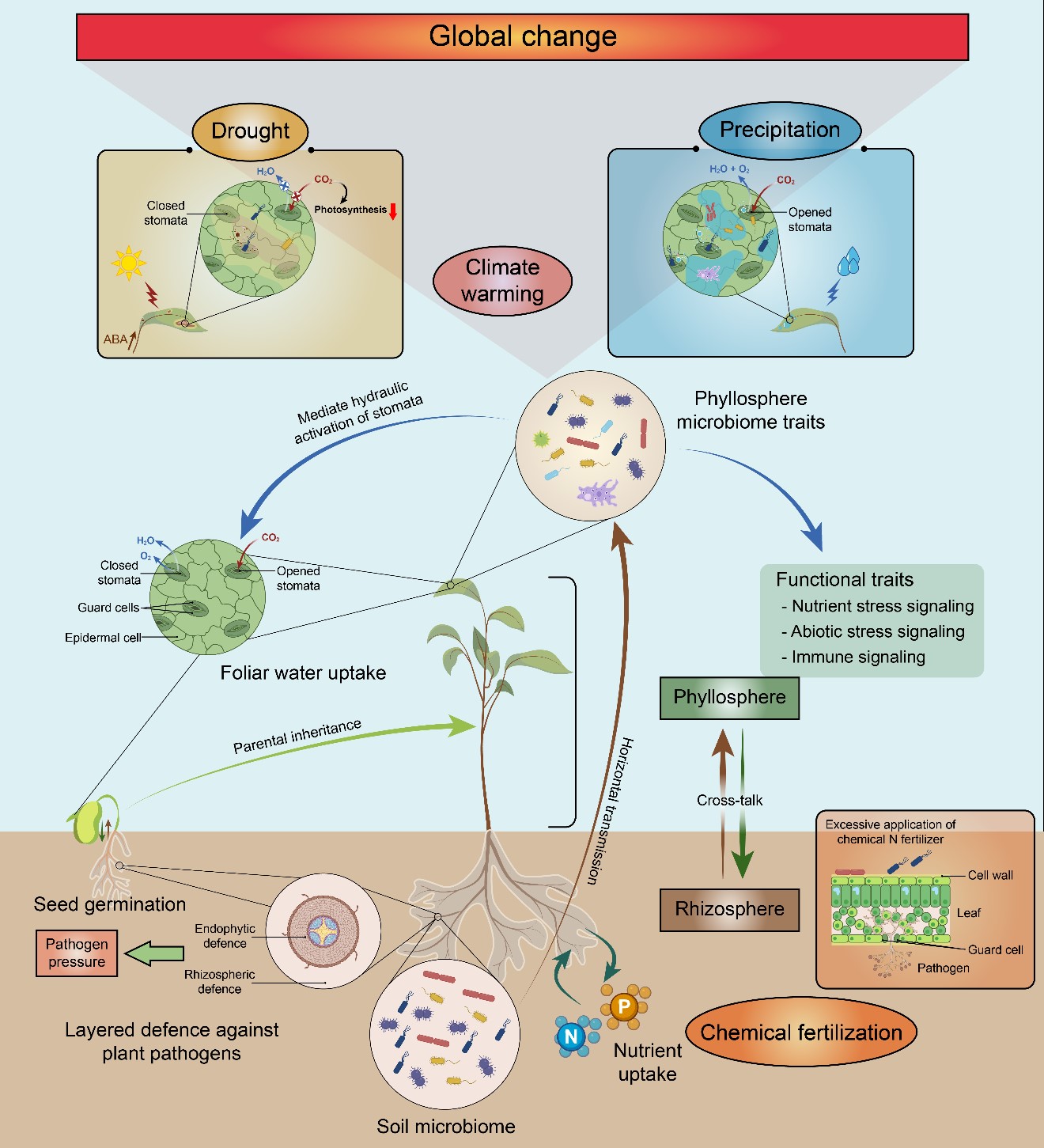There are no real plants on earth, plants form complex interaction networks with diverse microbiomes in the environment. Healthy plants have diverse and taxonomically structured microbial communities—the plant microbiome, which are ubiquitous in plant tissues and surfaces, play an important role in plant growth and development, nutrient uptake, and resistance responses. Therefore, the plant microbiome is also known as the second genome of plants. The phyllosphere represents the aboveground part of a plant, harbouring diverse microbes in both epiphytic (an organism that grows on the surface of a plant) and endophytic (an organism that lives within a plant) niches. When considering the upper and lower leaf surfaces, the total area of the phyllosphere on Earth is approximately twice as great as the land surface and the global bacterial population present in the phyllosphere could comprise up to 1026 cells. The Earth and its ecosystems are undergoing rapid global changes such as climate change (e. g. warming and drought) and land-use change (e. g. habitat loss and chemical fertilization), which are exerting pervasive impacts on ecosystem processes and functions, and various interactions among plants, microbes and the environment. A systematic understanding of how global change affects phyllosphere microbiomes could provide an important baseline for harnessing microbiomes to promote ecosystem resilience and plant productivity in a sustainable way.
Prof. Yong-Guan Zhu's team has long focused on the study of soil-plant-microbe interactions, and has achieved fruitful results in recent years. Prof. Yong-Guan Zhu was invited by the editor of New Phytologist to comprehensively summarize the recent progress in this field from the following aspects: (1) Ecological functions of the phyllosphere microbiome, (2) Drivers and sources of the phyllosphere microbiome, (3) Hotspots and frontier trends in the phyllosphere microbiome responses to global change, (4) Impacts of agricultural fertilization on the phyllosphere microbiome, (5) Impacts of global warming on the phyllosphere microbiome, (6) Impacts of precipitation and drought on the phyllosphere microbiome, (7) Ecoevolutionary dynamics between the phyllosphere and its microbiomes under global climate change. The authors further sorted through the priority research areas in the future, and proposed the following directions: (1) What are the mechanisms within and across plant hosts that underpin host-microbe interactions? (2) What are the major microbial taxa in the phyllosphere that control or mediate plant performance (e.g. nutrient uptake, plant disease suppression or growth)? (3) How does the phyllosphere microbiome interact with other plant microbiomes? (4) How can we manage the phyllosphere microbiome to increase plant health and performance in a changing world? (5) How will host and the phyllosphere microbiome evolve in response to global changes, and what impacts will this ecoevolution have on ecosystem functions?

Impact factors of the phyllosphere microbiome.